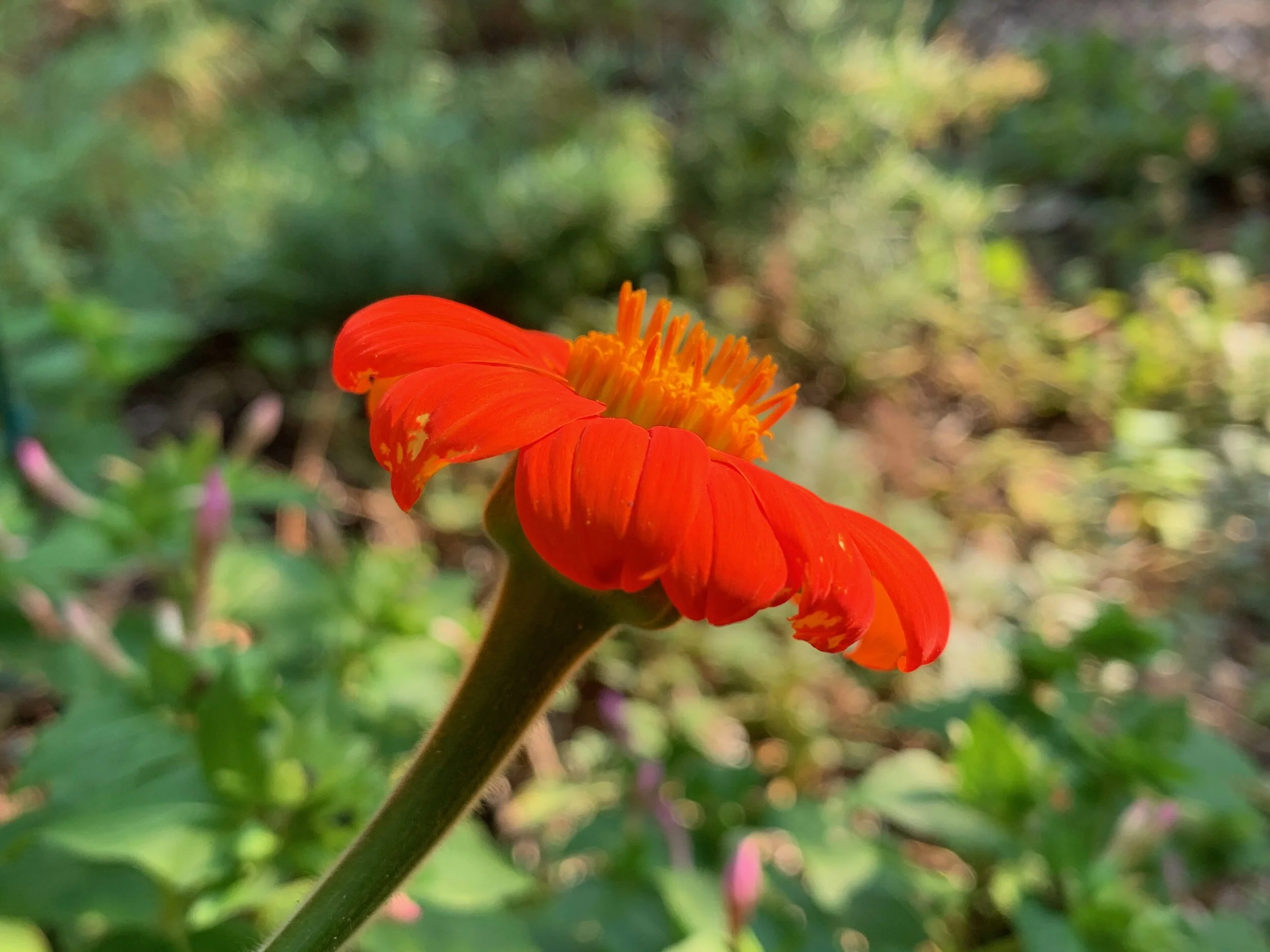We had a brief respite from the smoke this weekend and were able to get all of the north garden planted for winter. This involved taking out all of the tomatoes and peppers, amending the soil, doing a little aeration of the soil, replacing the drip lines, and planting seeds. The north garden will be home to brassicas and greens, this year. I’ve decided to skip Brussels Sprouts, as I never have much luck with them. But all the other usual suspects are in, and we’ll enjoy eating them early next year. Greens will be available to eat all winter, which we love.
The next job is to cover the hoops with row cover, to keep the birds and the cabbage white butterflies OUT!
I had mulched the tomatoes and peppers heavily with organic rice straw, and one benefit of that was that the soil level was still very much as it looked in April - still level with the top of the raised beds. I thought that was interesting. Another benefit of the straw is that I was able to move it from the beds to the chicken run, and now they have a new layer of carbon to scratch through and soil with their droppings.
In the south garden, Tom took out the beans and cucumbers and I took out the pumpkins and some cover crops. Now we have snap and shelling peas planted, which might crop before cold weather - we’ll just have to see. I’m a little early on my winter planting this year, so I’m not sure how everything will behave.
Our seed garlic will be arriving tomorrow, so I also prepared a bed for that. However, I had forgotten that we had a water issue that needed investigating. We noticed some extremely wet places in between raised beds last May, and Tom dug down to see if there was a leak in the irrigation, and didn’t find anything. We dialed down the amount of water going to those beds and decided to watch it this summer, since I had already planted the summer garden. That seemed to solve the problem, except for one very wet place in between two of the beds. So Tom dug a bunch of holes again today to see if there was a leak. Surprisingly, there wasn’t. And yet we see water seeping out the bottom of the sides of two raised beds! Tom thinks maybe the lower levels of the soil are so compacted that the water is dripping down to that level and then running off. This sounds possible to me. We are on heavy clay, and though we amend the soils each year with all kinds of organic matter, it takes a long time to change the tilth of soil. I also practice no-dig methods, which ensure that soil life is not disturbed, and in theory should actually improve the soil’s texture, but it could be that I need to add more organic matter down lower in the beds, next to the hard pan. So that’s what I’ll do.
This whole issue spurred us to discuss our watering habits more generally. Watering is kind of a crap shoot. In the summer, our plants seem SO dry and tired, and the soil seems dusty and dry, no matter how much we water. And we water a LOT. We are using a lot of resources. The general rule (and this is so general, it’s almost silly) is that plants in the ground (not containers, not raised beds) need an inch of water a week. Well, in a place that rains, that’s easy to calculate; but we have no rain nine months out of the year. So the soil is never soaked, and it is never sodden in the summer months - it is bone dry. Add to that very low humidity in the air (10% humidity is quite usual here in the summer months), and very hot temps (often over 100), and that means the plants are transpiring like crazy. And, we grow most of our crops in raised beds, which tend to stay drier anyway.
We did a whole bunch of calculations and we converted an inch of water to gallons per week, and even when we set the drips for 10 minutes a day, we’re still giving the garden more than two inches a week. You’d think that would be enough, more than enough! But in the summer heat we often drip for 15 minutes a day and the plants are still wilting and sad looking. They produce, though. So I suppose they are getting just enough. But honestly, I am just guessing.
We want to be good stewards of water, here in our dry dry dry West. And yet, we also don’t want all of our hard work go to waste - we want the plants to thrive. Growing at home is still a better use of water than buying fruit and veg from the market, so in the big scheme of things, we are conserving. It just feels bad to be using so much water. If we had a lawn, would we even think twice? Most people don’t.
Well, one thing we can certainly do is make sure that we don’t have any runoff like we did this past Spring. So, organic matter to the rescue! We are also thinking of buying a soil moisture meter, so we can start to really determine how the water is behaving deep in the soil.





















